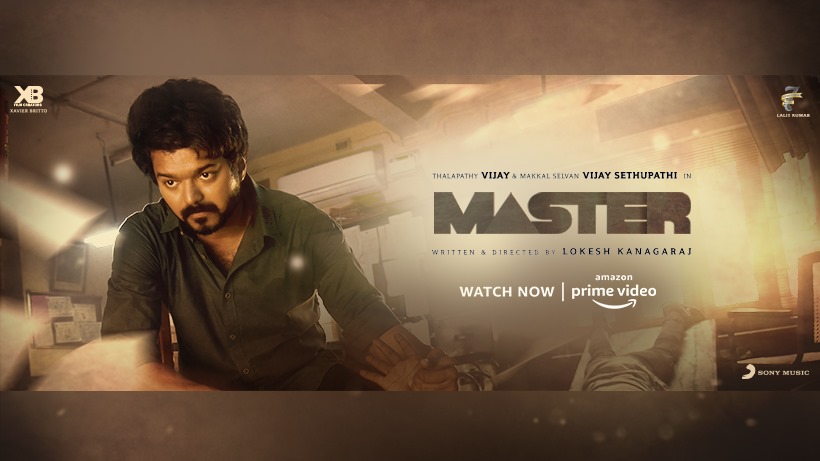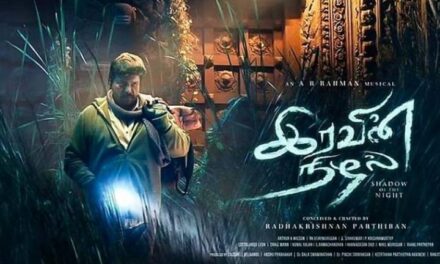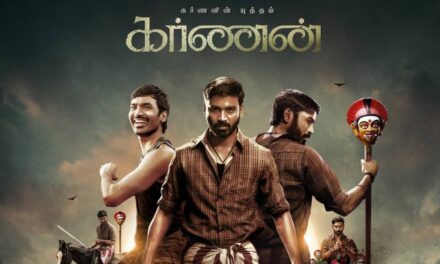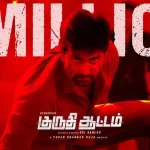Director: Lokesh Kanagaraj
Cast: Vijay, Vijay Sethupathi, Malavika Mohanan, Arjun Das, Shanthanu Bhagyaraj, Andea Jeremiah
Before you wonder, no, the headline doesn’t refer to JD and Bhavani, Master’s two main characters. I’ll come to them later. Let’s first talk about the artists behind this film’s creation. It’s fair to say Lokesh Kanagaraj is in ‘Unstoppable’ mode right now, with two back to back blockbusters (Maanagaram and Kaithi), a film starring Kamal Hassan in the works and Master sandwiched in between all of this. Master of course happened thanks to the blessings of Vijay, a superstar who’s undoubtedly in ‘Immovable’ mode. Propelled to demi-god status by his fans, he might not yet be superhuman enough to be immune to the pandemic (or so I think), though his stardom’s certainly been immune to the failings of some forgettable recent scripts.
It’s clear by now that Lokesh as a director has his own signature approach to the whole filmmaking process. His sensibilities are quite striking and unique. It’s to his credit that even the upcoming ‘Vikram’, for example, is being marketed more as a Lokesh Kanagaraj film than a Kamal Hassan film. But herein lies the problem. A Vijay film, especially these days, is a different animal altogether. Fan appeasement is the primary objective here and the ‘must-have’ elements that have to be incorporated into the film are pre-decided and non-negotiable. Let’s try to imagine and reconstruct Master’s journey to understand why this posed a problem.
I’m sure Lokesh’s one liner for Master would have been something like this: a wild, alcoholic college professor redeems himself and turns his life around when put in charge of teaching at a juvenile detention centre.
Before going into elaborate details about the plot itself, let me mention how Lokesh reminds me a lot of a young Gautham Menon. Just like Lokesh has in recent years, Gautham brought in a new wave of cinema in the 00’s and took the industry by storm with his unique, artistic filmmaking style. And after successive blockbusters, the one actor he wanted to work badly with was…Vijay. This, of course, never transpired. Thinking back now, and acknowledging the major clash in sensibilities, Gautham may well be counting this as a bullet dodged. Lokesh though seems the adventurous kind and is up for this ‘royal challenge’!
Now coming back to the plot, there are many ways in which a theme/idea like this could be treated. But this being a Vijay film, here’s how things pan out. Vijay plays JD, an alcoholic college professor. He gets an elaborate ‘mass’ intro scene that lasts for about 15 minutes and includes a road chase and fights inside of a bus and a metro train. This is then followed by a long, groovy dance number (though Anirudh’s music is memorable). The sequences at the college portray him mostly as a hopeless alcoholic, who miraculously sobers up whenever he has to speak about politics and democracy! But then things take a turn. He gets appointed as a teacher at a juvenile detention centre. He discovers to his shock that the kids there are under the virtual control of the menacing local thug Bhavani (Vijay Sethupathi). A terrible tragedy soon pits JD directly against Bhavani, setting the rest of the film up as a typical good vs evil/hero vs villain narrative. Needless to say, the screenplay is peppered throughout with prominent ‘formula’ elements to keep the frenzy high. There are frequent nostalgic throwbacks, including a literal Ghilli soundtrack remix and a now mandatory reference to Vijay’s famous line from Thuppakki (you know the one).
All this isn’t to say Lokesh is sidelined or anything. There’s a terrific action sequence inside a police station, a lorry chase on the highway and even an indulgent surprise reference to Kaithi in the climax that keep reminding us that this is HIS film. These apart, Lokesh’s stylistic signature is also very visible in many scenes, in his choice of lighting, score and even the colour scheme.
For various reasons though, Master never comes together cohesively as a sum of all parts. I often got the feeling of watching two different films in one- a Lokesh Kanagaraj film and a Vijay film. The problems begin with how all those fan appeasing tropes are just shoehorned inorganically into the script and don’t hold much relevance at all to the main plot. Most of the college sequence for instance, that runs for a good 60 minutes, falls into this category. Lokesh could have actually skipped all this and just begun the film with an alcoholic professor taking charge at a juvenile centre and it would have made little difference.
The villain’s character was problematic too. We get an elaborate but flimsy origins story for Bhavani before the opening credits. Vijay Sethupathi tries to make the most of what is offered but the writing is quite ordinary. You would think Lokesh would come up with something different from the typical Tamil cinema antagonist trope, where the villain goes after those dear to the hero to get one over him, but this isn’t the case.
The other supporting characters don’t leave much of an impression either. The heroine character played by Malavika Mohanan is just another tick in the ‘mass film’ box and offers nothing much to drive the story forward. Andrea has a rather bizarre cameo. Arjun Das is probably the only one who makes the most of his screen time with an edgy performance.
Lokesh acknowledged in many pre release interviews that this film would entail a process of compromise. He called it a 50:50 exercise. This thought process didn’t work for me at all. I would rather prefer either a proper Lokesh Kanagaraj film or a fully fleshed out ‘mass’ Vijay film. Master is stuck somewhere in between and struggles to pull away in one direction or the other. It’s an uneven cocktail of conflicting filmmaking ideologies that fails to give you much of a kick.
Rating: 2/5









